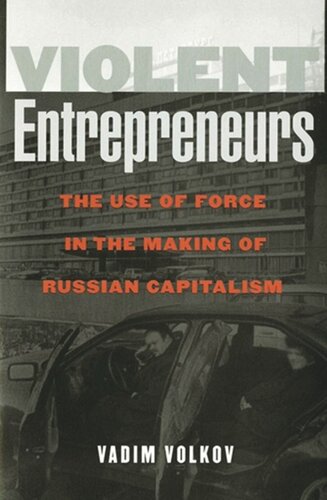

Most ebook files are in PDF format, so you can easily read them using various software such as Foxit Reader or directly on the Google Chrome browser.
Some ebook files are released by publishers in other formats such as .awz, .mobi, .epub, .fb2, etc. You may need to install specific software to read these formats on mobile/PC, such as Calibre.
Please read the tutorial at this link: https://ebookbell.com/faq
We offer FREE conversion to the popular formats you request; however, this may take some time. Therefore, right after payment, please email us, and we will try to provide the service as quickly as possible.
For some exceptional file formats or broken links (if any), please refrain from opening any disputes. Instead, email us first, and we will try to assist within a maximum of 6 hours.
EbookBell Team

4.3
68 reviewsEntering the shady world of what he calls "violent entrepreneurship," Vadim Volkov explores the economic uses of violence and coercion in Russia in the 1990s. Violence has played, he shows, a crucial role in creating the institutions of a new market economy. The core of his work is competition among so-called violence-managing agencies—criminal groups, private security services, private protection companies, and informal protective agencies associated with the state—which multiplied with the liberal reforms of the early 1990s. This competition provides an unusual window on the dynamics of state formation.Violent Entrepreneurs is remarkable for its research. Volkov conducted numerous interviews with members of criminal groups, heads of protection companies, law enforcement employees, and businesspeople. He bases his findings on journalistic and anecdotal evidence as well as on his own personal observation. Volkov investigates the making of violence-prone groups in sports clubs (particularly martial arts clubs), associations for veterans of the Soviet—Afghan war, ethnic gangs, and regionally based social groups, and he traces the changes in their activities across the decade. Some groups wore state uniforms and others did not, but all of their members spoke and acted essentially the same and were engaged in the same activities: intimidation, protection, information gathering, dispute management, contract enforcement, and taxation. Each group controlled the same resource—organized violence.